Test the Performance of AMSOIL ATV/UTV Synthetic Motor Oil
Installed in a 2018 Polaris Ranger and subjected it to an extreme test in the AMSOIL mechanical lab
Whether at work or play, enthusiasts push their UTVs and ATVs to the ragged edge. They need lubricants that deliver excellent wear protection despite intense heat and stress. To test the performance of AMSOIL ATV/UTV Synthetic Motor Oil, we installed it in a 2018 Polaris* Ranger* and subjected it to an extreme test in our mechanical lab. As the results show, AMSOIL delivered exceptional protection.
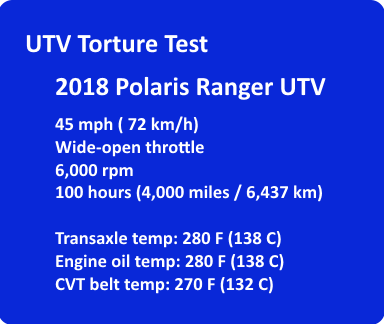
Heat and Stress Destroy Lesser Oils
Extreme heat and stress are the biggest enemies to long ATV/UTV life. High-rpm, hot-running engines create extreme conditions that can quickly degrade inferior oils.
Churning engine parts combined with elevated heat create shearing forces that can tear apart, or shear, the molecular structure of the oil. Additionally, the intense pressure the oil undergoes as it’s forced through tight clearances, such as the interfaces of the piston ring/cylinder wall and cam lobe/lifter, also causes viscosity loss due to shear. Oil that has sheared out of its intended viscosity range can fail to form a protective lubricating film on critical engine parts, leading to accelerated wear.
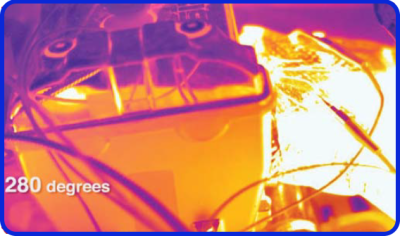
heat generated during the test.
Heat-seeking torture test
We designed the UTV Torture Test to replicate real-world, high-stress conditions.
To achieve maximum power output, a computer-controlled actuator held speed at 45 mph (72 km/h). The tachometer exceeded 6,000 rpm, pushing the engine and transaxle to their limits.
Transaxle temperatures exceeded 280°F (138°C), far beyond normal conditions. Engine oil temperature rose to 280°F (138°C) while the continuously variable transmission (CVT) belt hit 270°F (132°C). In these conditions, lubricants must withstand heat to protect precision parts.
After 100 hours and 4,000 miles (6,437 km) of torture, the engine and transaxle were torn down.
The Results
AMSOIL Synthetic ATV/UTV Motor Oil maintained viscosity despite the heat and delivered flawless protection, keeping pistons, cylinders, cams and transaxle gears in excellent condition.
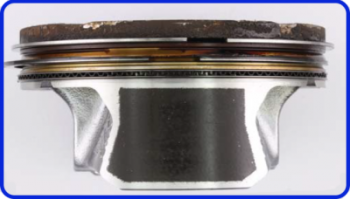
appears like-new, while the piston crown
demonstrated no abnormal deposits following
100 severe-service hours.
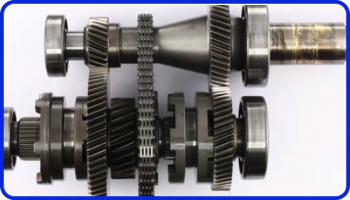
condition and appear like-new despite the
extreme heat.
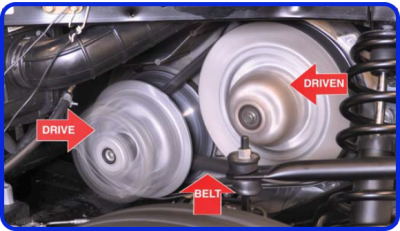
Inside Your UTV's Continuously Variable Transmission
Most UTVs have a CVT, or continuously variable transmission.
A CVT allows the engine to operate at optimum power and efficiency in varying conditions by changing the gear ratio based on speed, rpm and load.
The CVT has three basic components:- Drive pulley connected to the engine
- Driven pulley connected to the transaxle
- CVT belt
Each pulley has weighted sheaths that move in and out due to centrifugal force. This changes the diameter of the pulley. The belt constantly moves back and forth to create the ideal gear ratio, much like a bicycle.
When you depress the throttle, the drive pulley narrows and the driven pulley widens, creating a higher gear ratio. When you let off the gas, the drive pulley widens and the driven pulley narrows, creating a lower gear ratio. When you’re hard at work, the drive pulley senses the increased load and narrows, creating a lower gear ratio. This gives you the torque needed to get the job done.
Your UTV’s CVT is sophisticated. And, while the CVT itself doesn’t require lubrication, the transaxle does. With CVT replacement costs of $2,500 or more, it pays to protect your UTV’s transmission with AMSOIL synthetic lubricants.
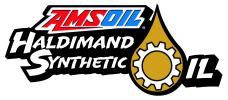
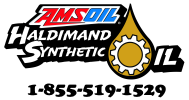




 Canada
Canada United States
United States